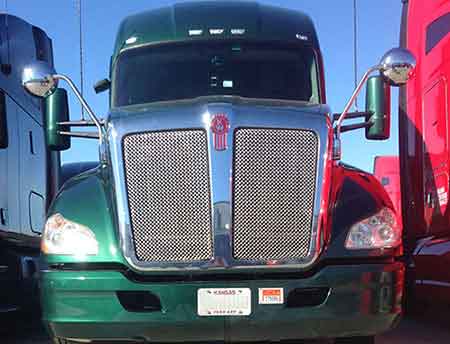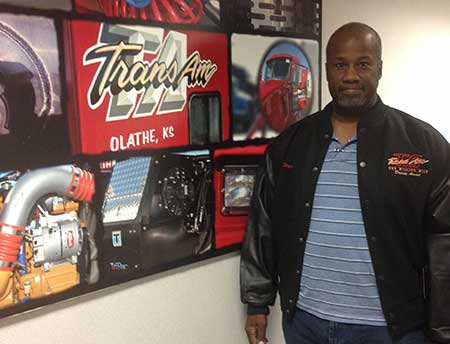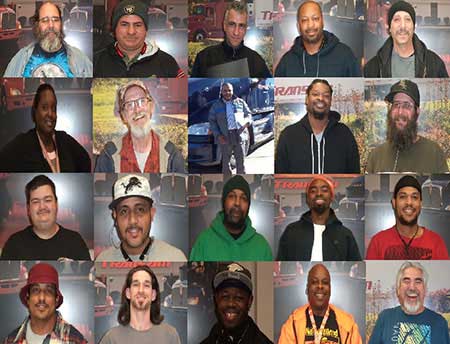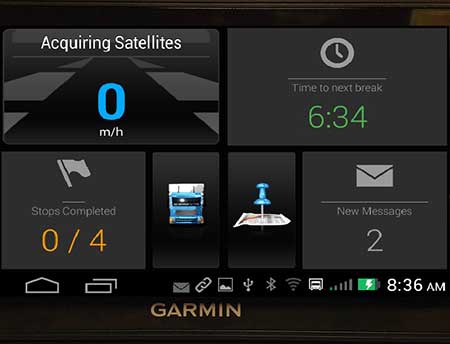In the last inspection blog we covered looking at lights, leans, and fluids. Now it’s time to look under the hood.
Latches
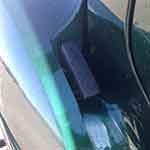 The hood is held down by a latch on each side of the truck. They are located between the wheel well and the bottom corner of the door. Place your fingers under the latch and lift up. This will cause the latch to pop out of place. Pop both latches before lifting the hood.
The hood is held down by a latch on each side of the truck. They are located between the wheel well and the bottom corner of the door. Place your fingers under the latch and lift up. This will cause the latch to pop out of place. Pop both latches before lifting the hood.
Lift the Hood: Dos and Don’ts
When accessing the engine, lift the hood from the side. Never open the hood while standing in front of the truck. Opening the hood from the front is much more difficult and dangerous.
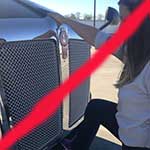 Opening the hood from the front means pulling all the hood’s weight toward you from its base. This makes the hood heavier, placing unnecessary strain on your back. To counterbalance the extra weight, drivers often put one or both feet on the front bumper while pulling on the hood. The bumper is not meant to hold weight. Standing or pushing on it can cause preventable damage to your bumper which means more time in the shop and less time on the road. Another reason to avoid pulling from the front is the hood connectors. If you stand in front of the truck and the hood connectors break, the hood will fall on you. This may cause serious injuries.
Opening the hood from the front means pulling all the hood’s weight toward you from its base. This makes the hood heavier, placing unnecessary strain on your back. To counterbalance the extra weight, drivers often put one or both feet on the front bumper while pulling on the hood. The bumper is not meant to hold weight. Standing or pushing on it can cause preventable damage to your bumper which means more time in the shop and less time on the road. Another reason to avoid pulling from the front is the hood connectors. If you stand in front of the truck and the hood connectors break, the hood will fall on you. This may cause serious injuries.
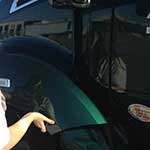 Be safe. Stand to the side. To lift the hood from the side, put your hand under the wheel well and gently lift upward. The hood will do most of the work for you and smoothly fall into place.
Be safe. Stand to the side. To lift the hood from the side, put your hand under the wheel well and gently lift upward. The hood will do most of the work for you and smoothly fall into place.
Safety Inspection
Once the hood is open sniff inside the engine compartment. Do you smell anything unusual: antifreeze, fuel, etc? Look for any fluid leaks. If you recently turned off the engine, do not touch anything inside the engine compartment. If you discover any weird smells, leaks, or if the hood connectors are broken, make a note of it on your pre-/post-trip inspection and continue with your inspection. Do not drive the truck if there is an issue with the engine compartment.
Closing Up
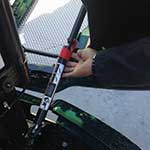 When the hood is open, the safety release locks into place. This prevents the wind from blowing the hood closed again. The safety release is in the engine compartment near the front of the cab. When your inspection is complete, push the release toward the engine to unlock it. This will allow you to close the hood again.
When the hood is open, the safety release locks into place. This prevents the wind from blowing the hood closed again. The safety release is in the engine compartment near the front of the cab. When your inspection is complete, push the release toward the engine to unlock it. This will allow you to close the hood again.
Pull the hood down the same way you put it up. From the side. It is not necessary to guide the hood all the way down. The hood is designed to smoothly fall back into place. Do not slam the hood. Once the hood is closed, walk around the truck to push the latches back down. Secure the hood before moving the truck.
Safety is important. After your pre-/post-trip inspection, if there is anything wrong with the truck, TransAm can assist you in finding a way to fix the problem. To take advantage of that help, do one of the following:
- Over the Road – Contact Road Assist. They will help you find options for what to do next.
- On the Yard – Contact the Shop. They will help you find options for what to do next.
If your equipment needs repairs, do not move the truck until the repairs are completed.
*Safety tips brought to you by Thomas Young and the Training and Development Department of TransAm Trucking

